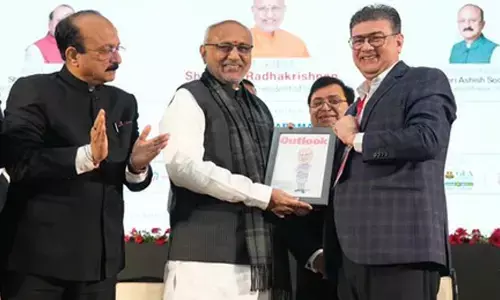Tricks: Lenses, ingenuity and creativity

Tricks: Lenses, Ingenuity and Creativity. It was the year 1918 and the movies (silent) were making their fledgling steps in nation, the same year saw the legendary Dadasaheb Phalke’s third film ‘Sri Krishna Janma’ release.
.jpg) It was the year 1918 and the movies (silent) were making their fledgling steps in nation, the same year saw the legendary Dadasaheb Phalke’s third film ‘Sri Krishna Janma’ release.
It was the year 1918 and the movies (silent) were making their fledgling steps in nation, the same year saw the legendary Dadasaheb Phalke’s third film ‘Sri Krishna Janma’ release.
The audience were reportedly in shock and awe when Kamsa’s head decapitates, flies out and vanishes. The remarkable feat was accomplished in days where green matte and CGI were far off, even in the dreams! Phalke had the guts to expose the film multiple times to achieve the feat, thereby introducing trick photography in films. Films in the silent era were renowned for their trick photography as they dealt with mostly mythological stories. Cinematographers like Trymbak B Telang and Hollywood trained Suchet Singh made what seemed impossible come alive on screen through sheer determination and creativity.
Shooting under artificial lights, use of multiple cameras and hours on the editing table made many celluloid marvels possible. For a scene where Hanuman has to be shown flying, a table was covered with white cloth and the actor was made to lie on the same and pose as if he was flying, careful lighting and editing made it look like he was actually flying. T r i c k photography picked up when talkies gathered pace and innovation in lenses became available to Indian filmmakers. The talkies era in the ‘50s, ‘60s were marked by the cinematographer duo Marcus Bartley and Babubhai Mistry. ‘Pathala Bhairavai’ was just a curtain raiser that showcased the prowess of Anglo-Indian cinematographer Marcus Bartley. He achieved a near impossible feat in ‘Maya Bazaar’ where he managed a night effect despite shooting in the hot afternoon of Madras (now Chennai) for the song ‘Lahiri Lahiri Lahiri Lo’ for which the camera was wielded by DS Ambu Rao.
Marcus made an aerial shot possible when cranes weren’t heard of. He made an aerial shot possible when cranes weren’t heard of. A shot of the entire Dwaraka city, as seen by Ghatotkacha in his demon form, was made possible with careful miniature work and sheer ingenuity by Bartley. However, the lensman gave the entire credit to art director Madhavapeddi Gokhale for creating the miniatures. Babubhai Mistry was often called a pioneer in the field of trick photography and special effects. It was Vijay Bhatt and 1933 Hollywood film ‘Invisible Man’ which inspired the art director Mistry to become a cinematographer. His prowess came into fore with 1937 film ‘Khwab Ki Duniya’ and earned him the monicker ‘Kaala Dhaaga’ (Black Thread) as he made seemingly impossible effects possible just by using rolls of black thread.
He later directed and produced films, and his works like ‘Sampoorna Ramayana’ (1961) and ‘Mahabharat’ (1965) are known for their spectacular special effects. It would be prudent to write a few lines about Ravikant Nagaich, a junior to the illustrious duo only in terms of age but not in talent. NTR’s ‘Sitarama Kalyanam’ and Bapu’s ‘Sita Kalyanam’ speak volumes about Nagaich’s creativity. He reportedly exposed the films as many as 30 times to get the desired effects. Ravana lifting Mount Kailas in ‘Sitarama Kalyanam’ and the Gangavatharam scene in ‘Sita Kalyanam’ are to be cherished and savoured. However, in this digital age where there is heavy reliance on CGI, trick photography and photographers have become an extinct breed.
ADITYA PARANKUSAM















